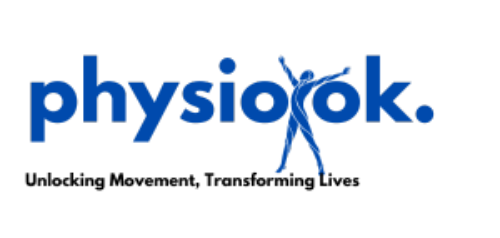Osteoporosis, a condition marked by weakened bones, increases the risk of fractures and can limit mobility. Physiotherapy offers a non-invasive, effective approach for osteoporosis management, focusing on building strength, improving balance, and enhancing overall bone health to reduce the risk of falls and fractures.
Understanding Osteoporosis and Its Impact
Osteoporosis occurs when bone density decreases, making bones brittle and prone to fractures. It commonly affects areas such as:
- Spine: Compression fractures in vertebrae can lead to pain and posture changes.
- Hips: Fractures here are severe, often requiring surgical intervention.
- Wrists: These fractures are common after minor falls.
Goals of Physiotherapy for Osteoporosis
- Strengthening Muscles: To support weakened bones and improve mobility.
- Improving Balance and Coordination: To reduce the risk of falls.
- Enhancing Flexibility: To maintain joint movement and prevent stiffness.
- Increasing Bone Density: Through weight-bearing exercises that stimulate bone growth.
Physiotherapy Techniques for Osteoporosis
-
Weight-Bearing and Resistance Exercises
- Examples: Walking, stair climbing, and gentle weightlifting.
- Benefits: These exercises place healthy stress on bones, encouraging bone density development.
-
Balance and Stability Training
- Examples: Tai Chi, standing leg lifts, and heel-to-toe walking.
- Benefits: Balance exercises reduce the risk of falls and fractures by improving stability and coordination.
-
Core Strengthening and Posture Correction
- Examples: Pilates, planks, and exercises focusing on back and abdominal muscles.
- Benefits: Strengthening the core provides support to the spine and can alleviate compression fractures, reducing back pain and promoting an upright posture.
-
Flexibility and Stretching Exercises
- Examples: Gentle stretching, yoga, and dynamic stretching routines.
- Benefits: Stretching enhances joint flexibility and range of motion, helping to avoid stiffness and maintain mobility.
-
Low-Impact Aerobics
- Examples: Swimming, cycling, or elliptical training.
- Benefits: Low-impact aerobic exercises improve cardiovascular health without putting excessive strain on fragile bones.
-
Education on Fall Prevention Techniques
- Physiotherapists educate patients on safe movement patterns, environmental adjustments at home, and techniques for safe walking to avoid falls.
- Practical Tips: Ensuring non-slip surfaces, adequate lighting, and minimizing tripping hazards.
Benefits of Physiotherapy for Osteoporosis Patients
- Reduced Fracture Risk: Stronger muscles and better balance decrease the likelihood of falls and fractures.
- Improved Mobility: Regular movement and exercise prevent stiffness, enhancing joint and bone health.
- Better Posture: Core exercises strengthen spinal support, helping to prevent the hunchback appearance associated with osteoporosis.
- Increased Bone Strength: Weight-bearing exercises stimulate bone formation, slowing bone loss.
- Enhanced Confidence: Improved stability and mobility foster independence and confidence in daily activities.
Precautions and Guidelines for Osteoporosis Patients in Physiotherapy
- Avoid High-Impact Exercises: High-impact activities like running or jumping may cause fractures.
- Mindful Movements: Avoid twisting the spine or bending forward from the waist, which can lead to compression fractures.
- Gradual Progression: Begin exercises at a low intensity and increase gradually to avoid injury.
- Proper Warm-Up: Gentle warm-ups help prepare bones and muscles for exercise, reducing the risk of strain.
When to Seek Physiotherapy for Osteoporosis
Physiotherapy is beneficial if osteoporosis impacts your mobility, balance, or daily activities. A physiotherapist can design a personalized exercise plan focusing on your bone health needs and physical condition.
Conclusion
Physiotherapy provides a safe, effective approach for managing osteoporosis. By focusing on strengthening, balance, flexibility, and posture, it empowers individuals to live actively while minimizing fracture risks. With professional guidance and dedication, physiotherapy can be a powerful tool in preserving bone health and enhancing life quality for those with osteoporosis.
